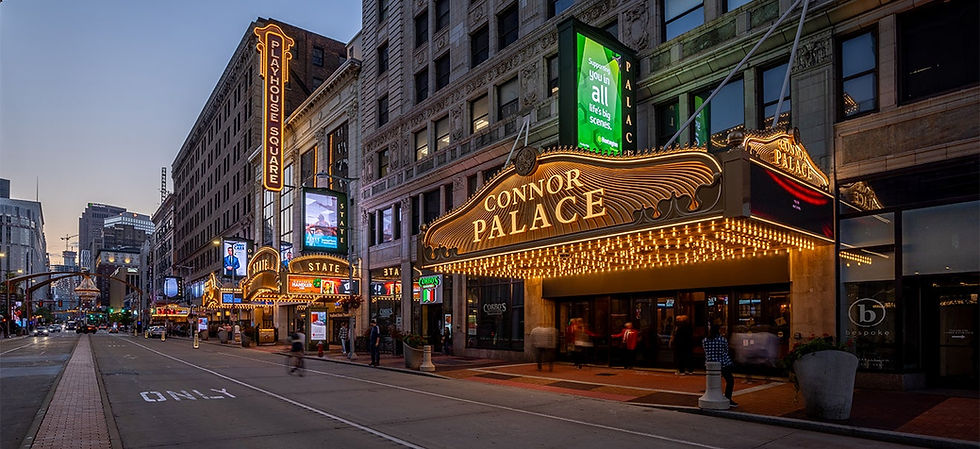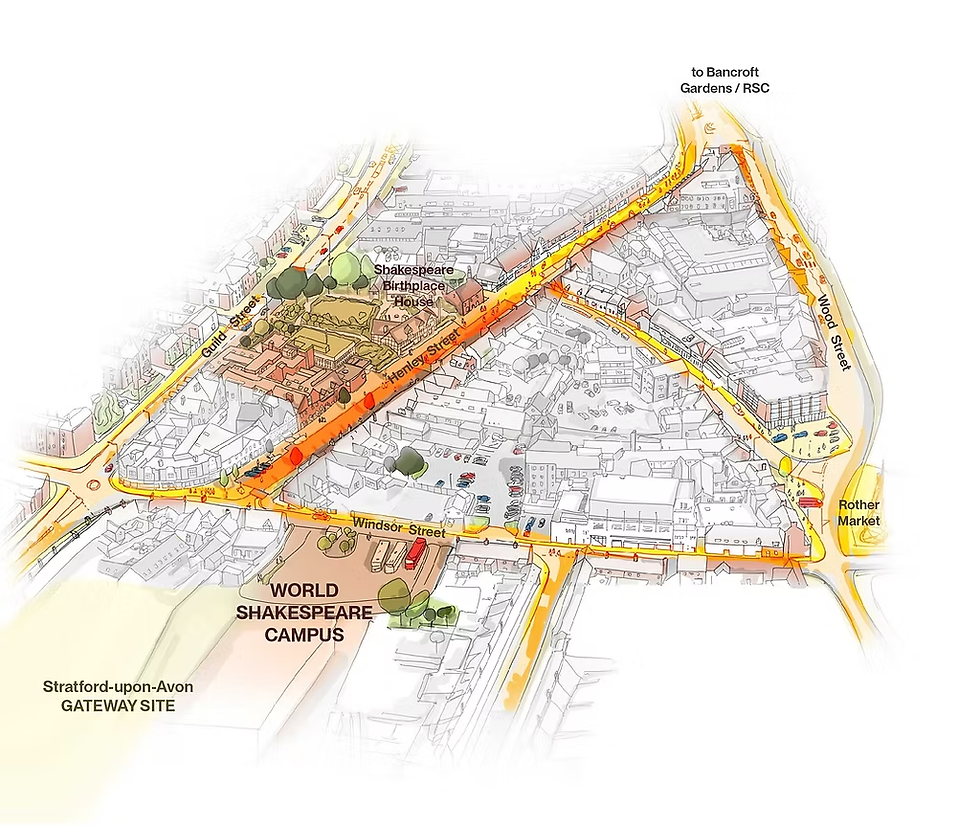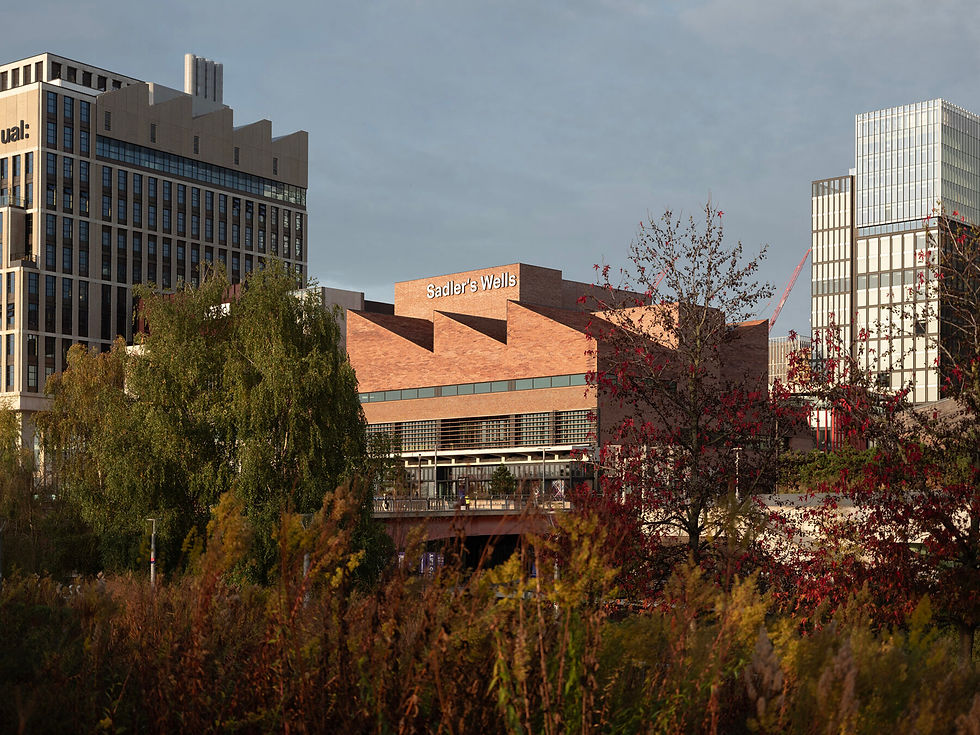Cultural Cities: Report Part One
- Heather Fearfield
- Mar 13, 2025
- 8 min read

Future Cities Forum has been following the Planning and Infrastructure Bill as it begins to go through Parliament. The UK government announced this week that organisations such as the Theatres Trust will no longer be required to input on planning decisions. It said it was 'putting growth at the heart of the statutory consultee system and helping deliver the government’s Plan for Change milestone of delivering 1.5 million new homes.'
The Theatres Trust has reacted by saying:
"While Theatres Trust welcomes Deputy Prime Minister Angela Rayner’s announcement of a review into the planning statutory consultee system, of which Theatres Trust is a committed and active part, we do not recognise the characterisation of Theatres Trust, made by the Deputy Prime Minister and the Ministry of Housing, Communities and Local Government, as being an impediment to growth.'
Following the announcement by the Government, there have been questions around whether the changes to the planning system in this instance will mean the demise of some theatres in UK cities.
In the first part of our 'Cultural Cities' report part one, the discussion began by asking Craig Hassall, former CEO of the Royal Albert Hall, London and now Chief Executive of Playhouse Square in Cleveland, Ohio, how he reacted to the UK government announcement. He said:
'Having been here in the US for two years, I can say that the UK planning controls are tougher and that's a good thing. Theatres don't have the respect here that they do in the UK. On the other hand the community here is ready to step up and fund culture. There is a very entrepreneurial spirit here. People will give from a hundred dollars to three to four million and they do! When I was in London at the Albert Hall there just wasn't the fire in the belly for support and fund-raising and there is a marked difference in the US.'
Craig spoke of the UK being far ahead in thinking about environmental concerns:
'When I left The Albert Hall in London, I had been Chair of the Exhibition Road voluntary group which encompassed the National History Museum, Goethe Institute, V&A Museum, Royal College of Music and others and where we would discuss environmental practices in the cultural industries. It was very productive, the notion of joining forces and so many things are stronger when you are together. Playhouse Square in Ohio has twelve theatres in a block, a hotel and two apartment buildings as well as retail, but I have a lot more control here. But the environmental concerns are so far behind the UK. I remember in one of my first meetings, single-use plastic water bottles were being handed out and when I mentioned that issue, everyone seemed surprised. So we are still fighting environmental reforms in the US.
'What is impressive is the strong sense of philanthropy. We have a small city here in Cleveland, but the community believes it must support everything from infant mortality issues to education - with everything being funded by the community. When I arrived here all the theatres were renovated and we have the highest audiences outside New York City. Our theatres are always full.'
Craig was asked about skills training in the cultural industries in the US, which is a current concern of the UK government:
'Training has not lagged behind despite the fact that it is not government supported. We have strong tertiary education institutions, but women and persons of colour have suffered in not getting training and jobs backstage. It has been very unionised here and jobs are handed down from father to son often. I am trying to address that now and give those overlooked groups access to a formal programme. We can give them experience backstage and something on their resumes, so that they can study in Cleveland and then get seconded to a Broadway show. The Government here is not at the table but the institutions are keen and most importantly young people are too.'

Craig was joined in our 'Cultural Cities' forum by Gergana Draganova, Urbanism Director at BDP, who is working on a new masterplan for Stratford-upon-Avon's cultural attractions and Scott Carroll, Director, LDA Design, who has created new public realm for Sadler's Wells new presence in Stratford East London.
While Craig in Cleveland is concerned with the district development and place-making for Playhouse Square, so too are organisations like the Shakespeare Birth Trust in Stratford-upon-Avon, Warwickshire. Tourism including visitors from the United States has fallen away here in recent years and now there is an impetus to create a fresh approach to encourage tourists back.
Gergana stated that research is very important for the Stratford masterplan project, which BDP is leading:
'The question is how we hold the legacy of Shakespeare while attracting new audiences. There is an opportunity to re-position the offer to the community and the global audience. We are in the early days of the project but we need to think what this new 'campus' will be. Stratford as a destination has changed after Covid and it is not the tourist destination it used to be.
'How can we develop a business case for it? Perhaps we shift to immersive attractions while retaining the important legacy of Shakespeare. There are many consultants on this project such as museums and transport planners, to help us get this right. We have also had some stakeholder engagement.
'The campus idea came from the client, the Shakespeare Birth Trust, and we are working on important wayfinding measures to link heritage sites. We do not have to focus on just one big building but link all the very interesting and historic buildings in Stratford together.'

Above: World Shakespeare Campus Master-plan (courtesy BDP)
BDP writes:
'The masterplan will explore the regeneration of Henley Street, Shakespeare’s Birthplace, and the Shakespeare Centre, strengthening their role within the wider cultural landscape. It will also assess the potential for a new World Shakespeare Museum within the Stratford-upon-Avon Gateway, providing a focal point for discovery and storytelling. By improving orientation and links between heritage spaces, the campus has the potential to create an enriched experience for visitors and residents alike. BDP, as lead consultant, will be supported by key partners with expertise in tourism, business planning, commercial feasibility, cost planning, transport, and museum design.
'Through this project, BDP aims to help Shakespeare’s Birthplace Trust redefine how Shakespeare’s legacy is curated and presented. The new campus is envisioned to showcase creative collaborations, expanding learning programmes, and establishing a centre for research and knowledge. By embracing innovation and thoughtful placemaking, the World Shakespeare Campus, will provide an inclusive and engaging cultural destination that resonates with visitors from around the world.

Above: audiences enjoying the new terraces on the East Bank Stratford outside Sadler's Wells East (Courtesy Neil Speakman for LDA Design)

Image: 'You are welcome' - public realm outside the new Sadler's Wells studios on the East Bank, Stratford - courtesy of Scott Carroll/LDA Design
How do designers make cultural districts accessible to all? How can 'greening' support health both for those that work in these places and those who visit. These questions were answered by Scott Carroll, Project Lead for LDA Design, who has been working on transforming all public realm across the new cultural quarter of East Bank Stratford, which includes new buildings for BBC Music, the V&A / V&A East, and the London College of Fashion.
Inclusivity in place-making has been top of the agenda in LDA Design's public realm design around Sadler's Wells in Stratford, according to Scott. He told our cultural cities forum group:
'We needed to look at spaces around the theatre both in physical and intellectual terms. We needed to consider race and gender, faith and sexual orientation as well as disability. There is a sign over the front door saying 'You are welcome'.
'We followed the very helpful LLDC piece of guidance and also looked at great research about how the multi-cultural context can respond to design. We consulted around seven thousand people over varied events to inform us about what we should do. In terms of wellbeing, we needed to make a place that is welcoming and be aware of how we could weave in biophilic design. We thought the best way was to make beautiful places that are rich in sensory terms and great for stress reduction.'
Scott described making space as accessible - physically, emotionally and intellectually to as many as possible, irrespective of disability, age, gender, sexual orientation, race and faith. He explained that inclusivity was hardwired into the design strategy through several strands: LLDC Inclusive Design Guidance, Built Environment Accessibility Panel iterative review, research into the specific multi-cultural context of the park and an extensive programme of engagement, engaging people over 39 events during the design phase.
'Whenever we begin a project we always look at how long a place is meant to last and we have a special management company to maintain what we have created here. We have been working on public realm in Stratford for a long time, since the Olympic Park was created, and we know the area really well and how it gets used. We want to get people to buy into it and feel connected to the place and know that it is loved.'


He added:
'There's a 6m level change across the site so we took advantage of this by creating a cascade of terraces that could be colonised by people, culture and nature with step free routes and good public transport connections with disabled parking and drop off. There is design for a spectrum of social opportunities including seating with social niches for people using wheelchairs or pushchairs and social spaces located next to active, well managed routes with high level views over the surrounding park There is space for picnics and a diverse programme of dance within the public realm rooted in the East London, national and global dance community from ballet to hip hop theatre and everything in between.'
LDA Design writes:
'A cultural pull east is well underway, and with this comes fresh chances for local people. The Mayor of London has called Sadler’s Wells East a “game-changer for dance, providing inspiration and opportunities for performers and people across the capital”. The opening season will champion local artists alongside some of the best the UK has to offer.
'LDA Design has created a flexible and hardworking public realm and landscape, including two rooftop terraces where the dancers can relax and enjoy the fantastic views. The terraces also make for great events spaces.
'O’Donnell + Tuomey’s Sadler’s Wells East is a handsome, Venetian brick building with a saw-tooth roofline, reflecting east London’s industrial heritage. LDA has partnered with them to ensure landscape and life colonises the building’s fabric, bringing seasonal colour, motion and lightness.'
Future Cities Forum would like to thank its contributors to this important discussion. In part two of the 'Cultural Cities' report, we focus on the development of the public realm around the International Slavery Museum, Liverpool with Michelle Charters OBE, digital museum projects and immersive exhibitions with Professor Murray Pittock of the University of Glasgow and Catherine Wood, Director of Programmes at Tate Modern. Following that report we will cover the perspectives of Plymouth City Council and Plymouth Culture on the 'Sea for Yourself' community-directed project and architects Wright & Wright on the transformation and re-modelling of the British Academy's Carlton House Terrace HQ.




Comments